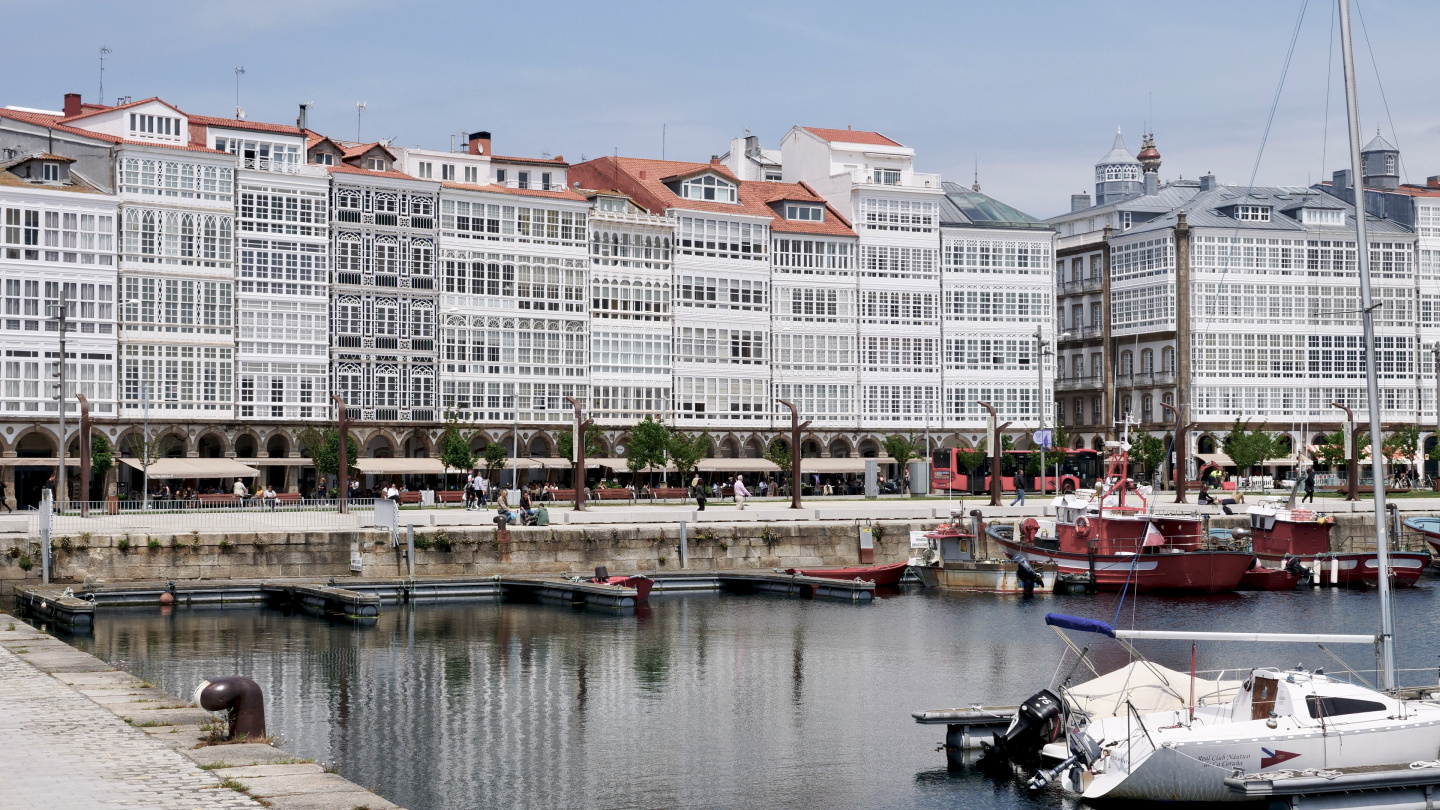After quiet days of anchoring, we were ready for some city time. The wind was rather light for the first part of the 13 nautical mile voyage and we enjoyed ourselves by being out on the water. The second half of the day’s leg passed much quicker as the daily afternoon wind arose to push us to A Coruña. It has been a fascinating phenomenon, when really every afternoon the wind from north was suddenly rising to 20 knots for a few hours. It might be a land breeze, or could it be related to the nearby mountains?
There are two marinas in A Coruña. Marina Coruña is the first one immediately inside the breakwater and it is about a kilometre from the city centre. The second marina is La Marina Real, del Real Club Náutico de La Coruña and it is located in the city center. It has been previously a fishing port and the old town is just next door. We pondered for a while for choosing the marina as we have got recommendations that the marina in the centre is too restless because of all the partying. However, we like to be in the middle of the action and so we went for Club Náutico’s marina. Only on Saturday night there were some youngsters partying for some time at the quay, otherwise it was very peaceful.
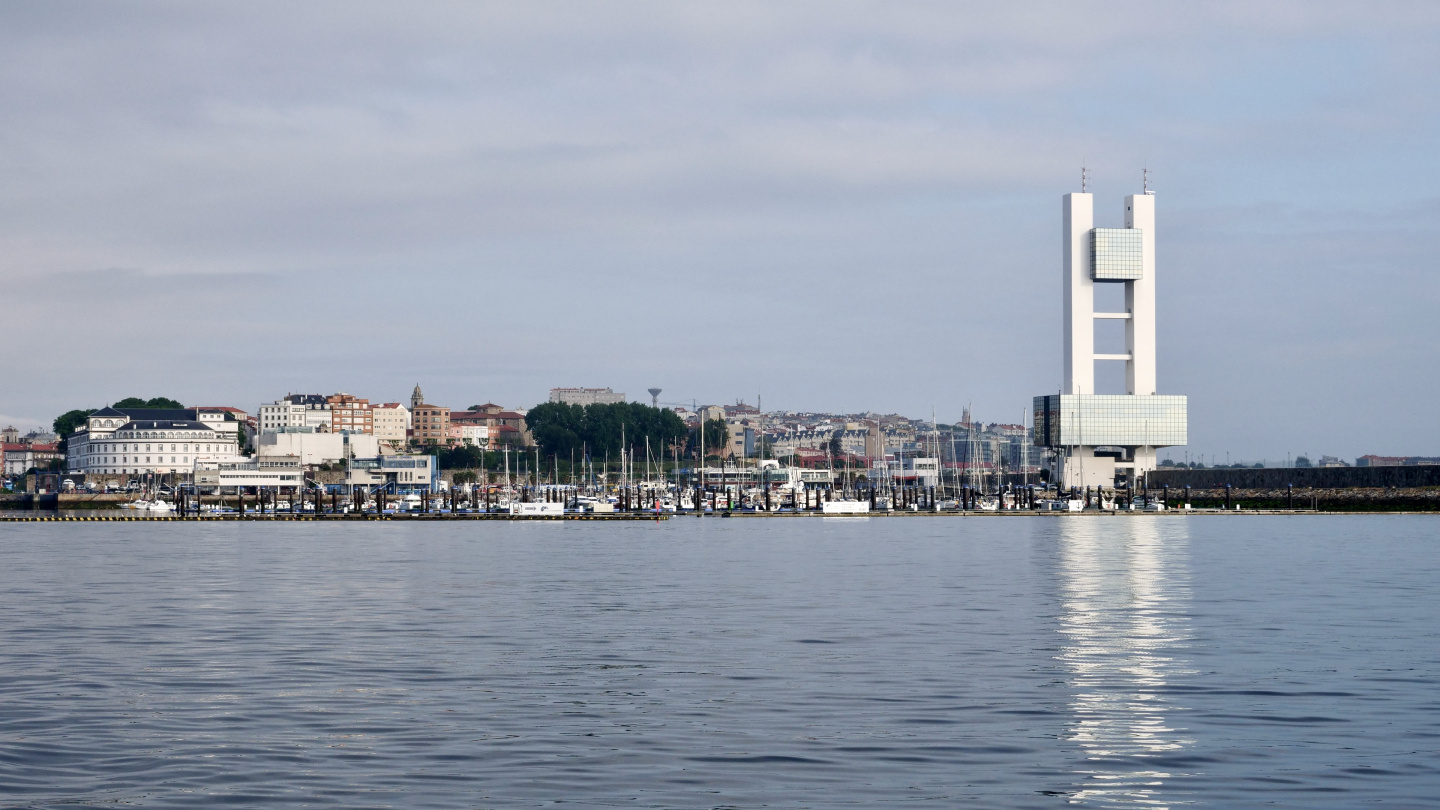
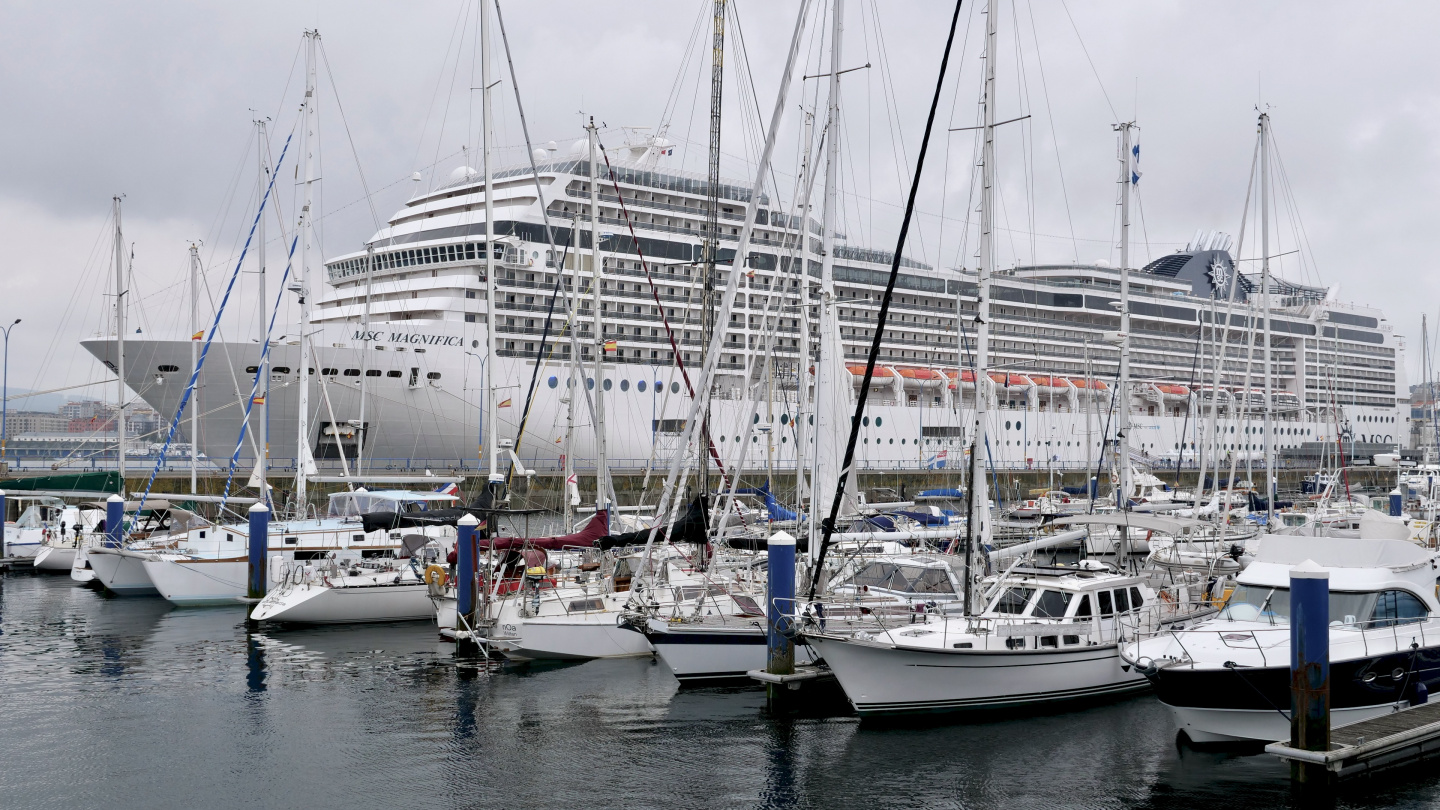
Totally different thing was the swell. In Sada we had the ocean swell entering the marina and so it did a little here as well. However, the major cause of the waves in marina were fishing and pilot boats. It was peculiar that there was no speed limit in the harbour area or if there was any it was not enforced. These ships run at full throttle out to sea and back again while their wake waves created chaos among moored yachts. For example, fishing ship Pombo Cinco (IMO: 8959324) ran several times through the harbour at 9.2 knots according to marinetraffic.com. A Coruña is also a popular cruise ship destination and there were four of them during our visit as well. The cruise ships, even if they are enormous, handled their manoeuvres very professionally and they didn’t do any waves in the marina.
Oh, the town itselfwas absolutely charming. The centre of the old town is rather huge and very lively. As always it feels good to see the city centre that is alive and still popular among the locals and tourists as well, not forgetting university students.
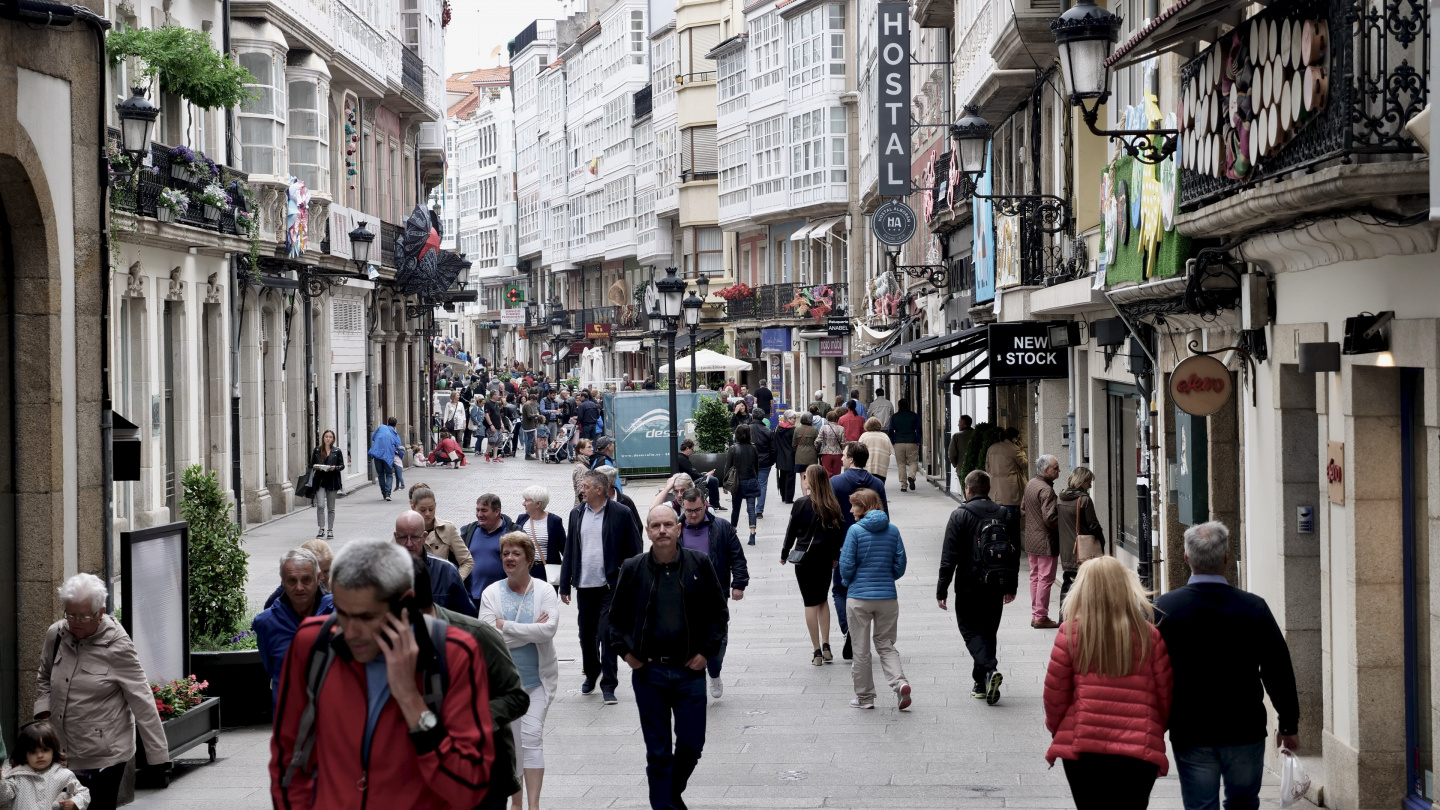
For the town of this size (pops of 250 000), A Coruña surprised us with the numerous restaurants. It did not matter what street in the old town we were strolling there were always a row of restaurants next to each other. And when taking a turn to next street the line of restaurants just continued. The loveliest was that evening after evening the restaurants were full. After eight in the evening when Spanish go for a dinner they have at first a glass of beer or wine with small tapas. The real dinner is starting only after nine with dishes arriving both to outside and inside tables. It was quite a difficult to decide where we would like to have the evening meal as the food in all of them looked delicious and very reasonably priced, indeed. In this port we did not need to use much from our fridge 🙂
We like to explore the historic places, so the lighthouse of Hercules, Torre de Hércules, was our top destination in A Coruña. The tower is located at few kilometres on the other side of the city centre, thus we walked across the town and climbed on the top of the 60 metre tall hill where the 57 metre tall Tower of Hercules is proudly standing. The Tower of Hercules is the world’s oldest Roman lighthouse that is still in use, helping seafarers to navigate safely. The lighthouse was built in the second century and the Romans built it to the westernmost point of their empire for marking the end of the world. They also gave a name to this area, finisterra or the land’s end ans the maps ended there.
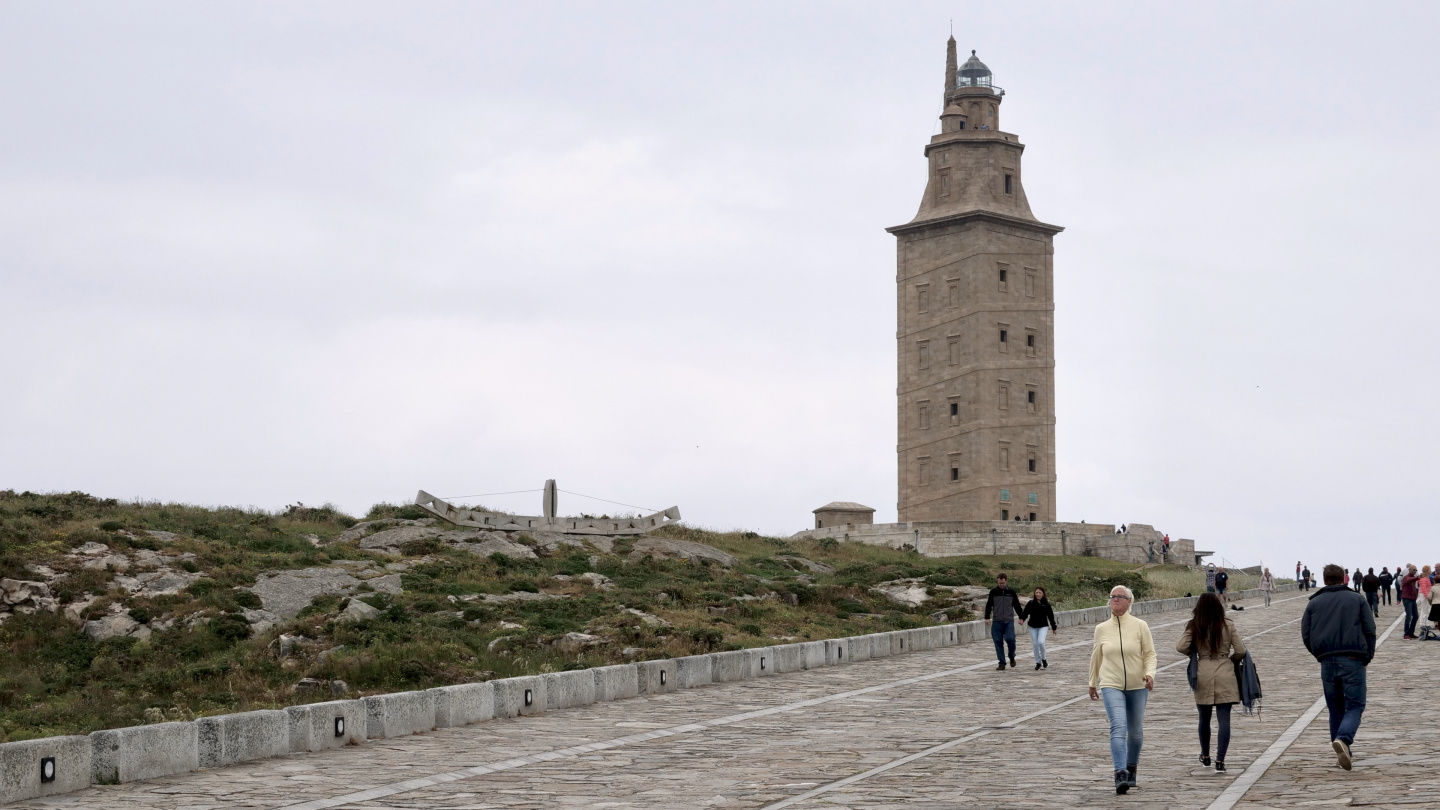
We were in awe looking at the civil engineering skills of the Romans and how the oil lamp and mirrors were used to cast the light into dark Atlantic. It is still functioning with the light that is visible 20 nautical miles at sea but of course nowadays it’s powered by an electric light. The coast near A Coruña is known for its treacherous waters and due to huge number of wrecked ships it is called the coast of death, Costa da Morte.
The age of the lighthouse is maybe best described by the fact that it was already restored in the 18th century when many of the current town’s buildings did not even exist. There are several myths about the building of the lighthouse from which the most interesting is the three days and nights long fight between Hercules and giant Geryon. It is said that Hercules buried the head of his opponent into the hill where the lighthouse was built.
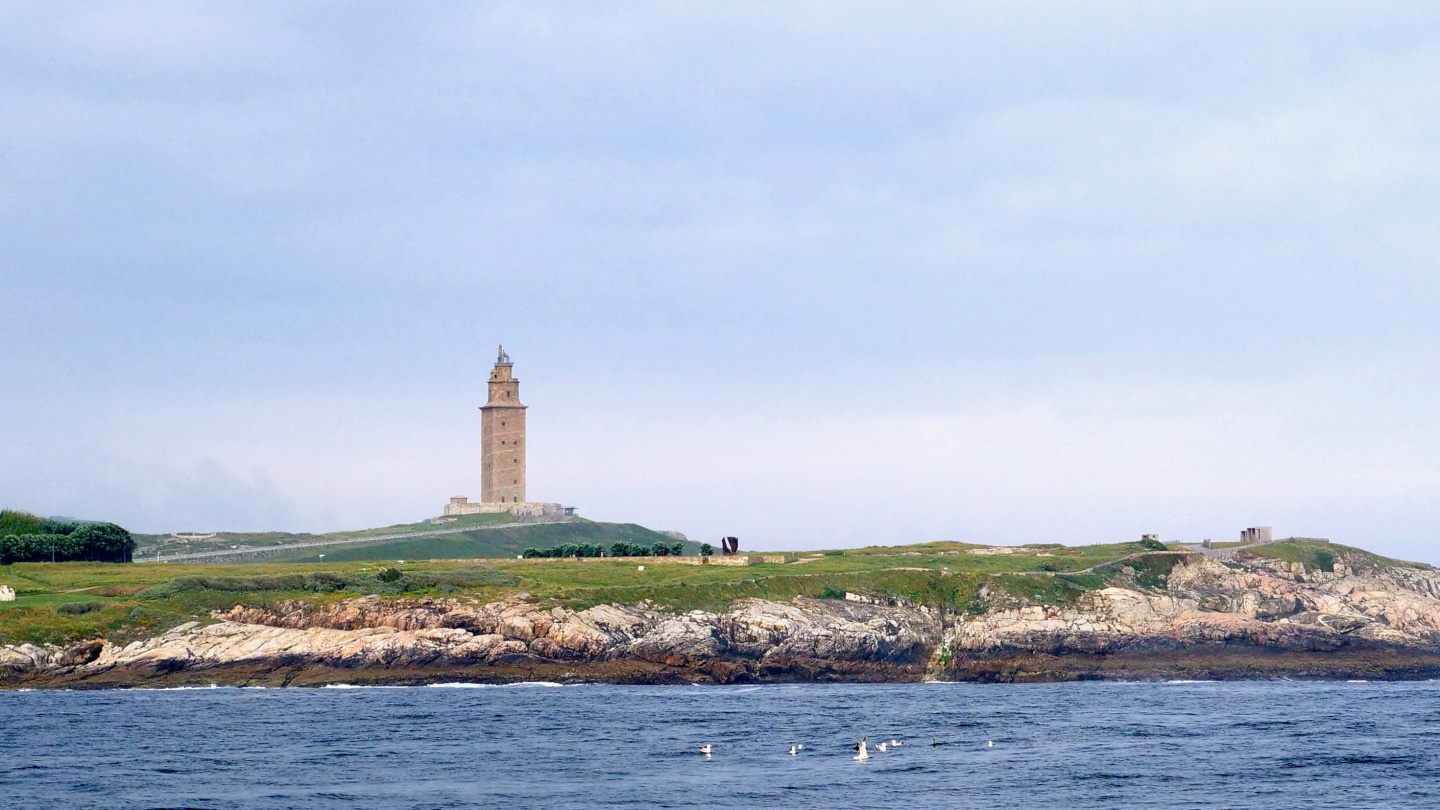
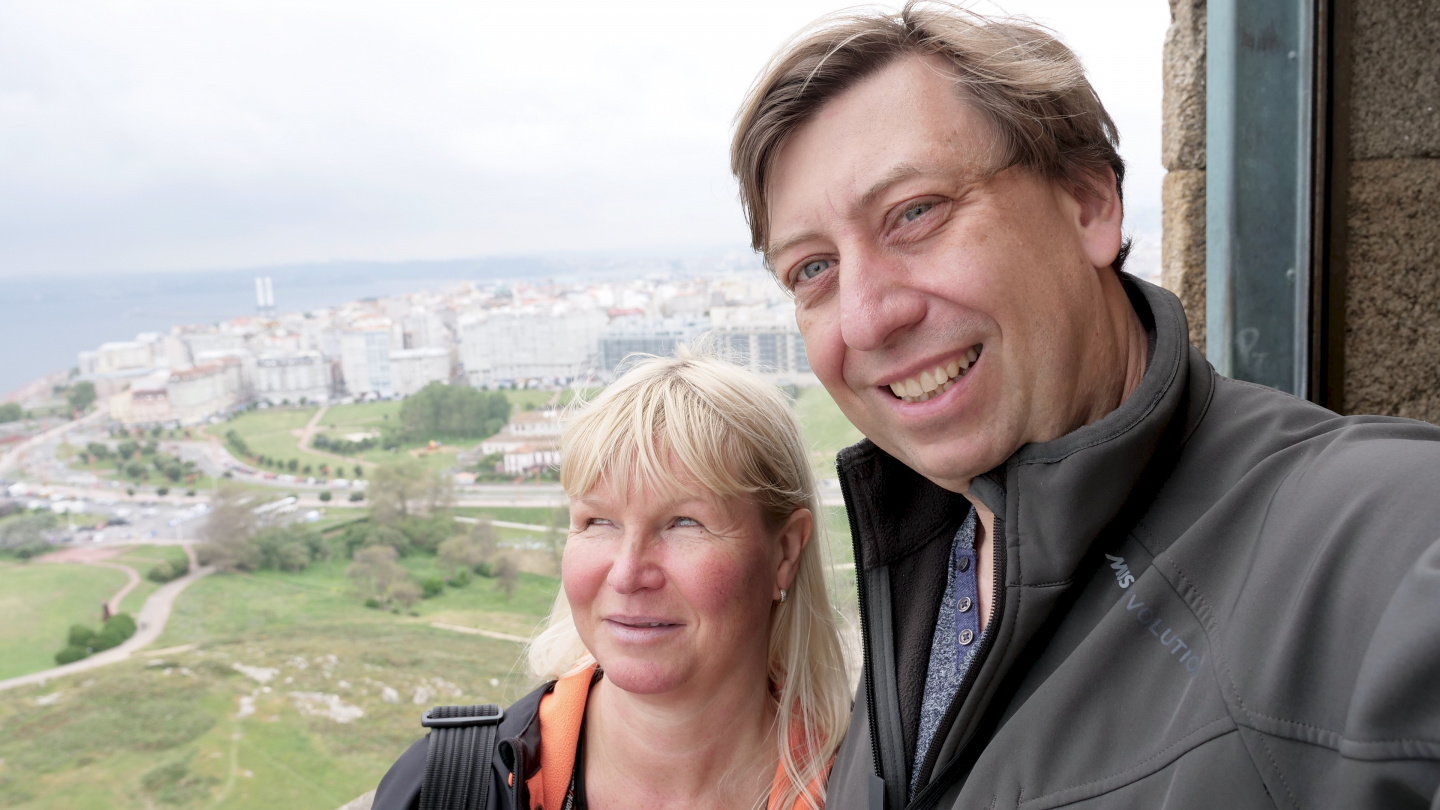
The view from the lighthouse is amazing. We could see the whole peninsula of Coruña. At the foot of the lighthouse is huge Celtic compass rose that was our next exploration point. The seven symbols of the rose represent seven Celtic nations and the eighth in the direction of the south represent the Galician legend of Tarsis and it is marked with the skull.
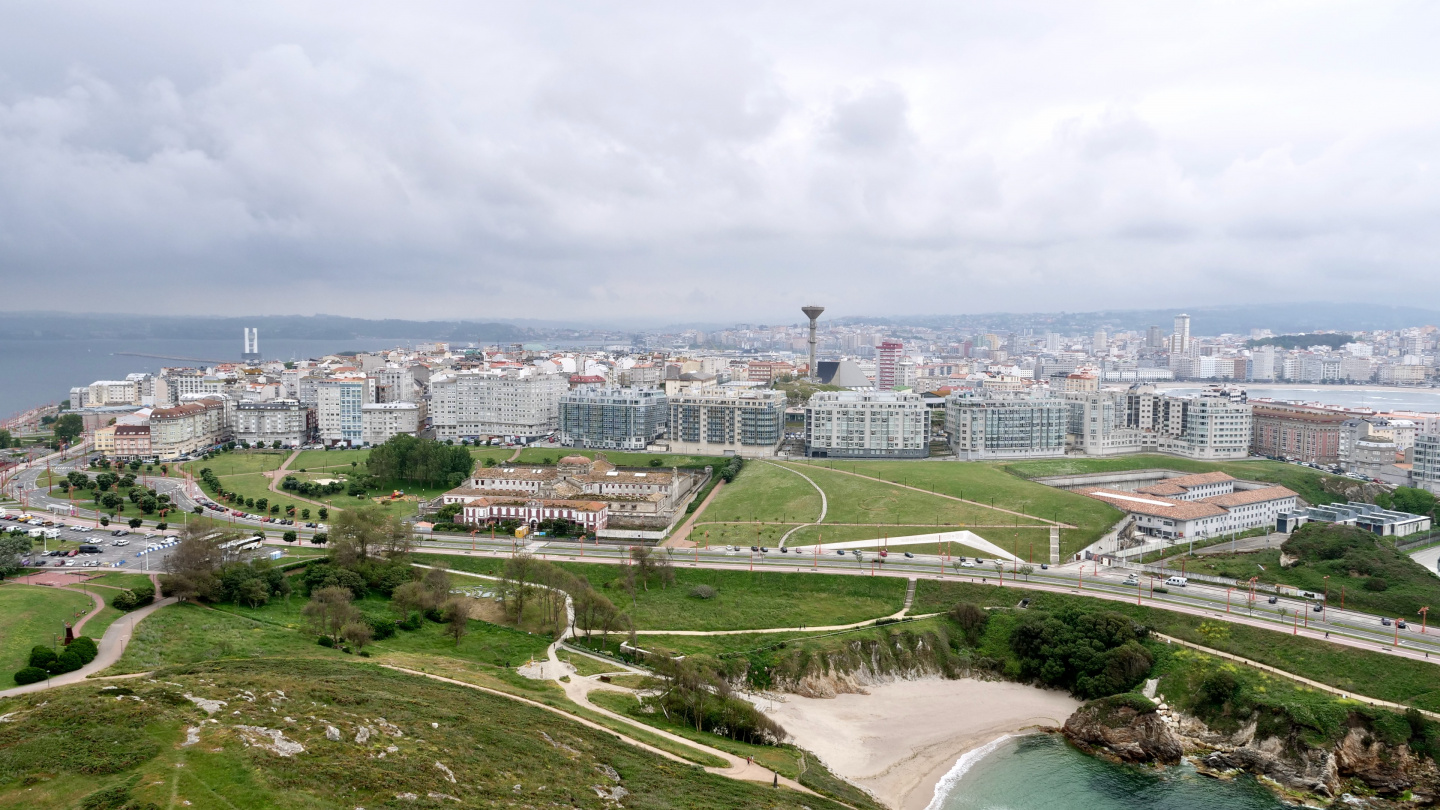
The Celtic rose is also symbolising our sailing voyages since 2014 as we have been sailing in home waters of six of these nations. We only missed Wales.
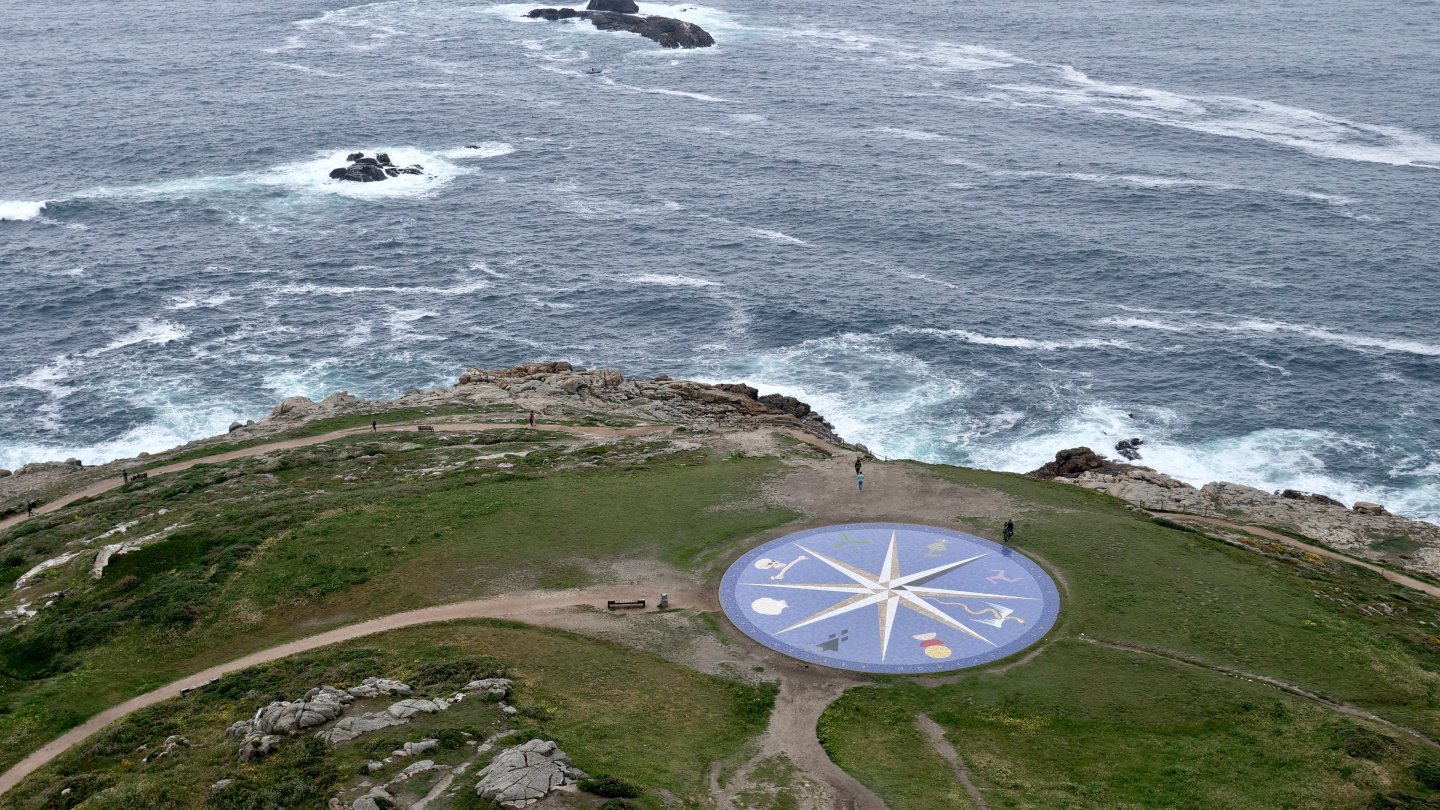
In the compass rose the each Celtic nation was marked in their own language: Éire Ireland, Alba Scotland, Mannin Isle of Mann, Cymru Wales, Kernow Cornwall, Breizh Brittany and our host nation Galiza Galicia.
We returned to the boat by walking along the 10 kilometre long promenade of A Coruña called Paseo Marítimo. On our side the waves were hitting coastal cliffs and the Sun was about to show itself between the clouds.
